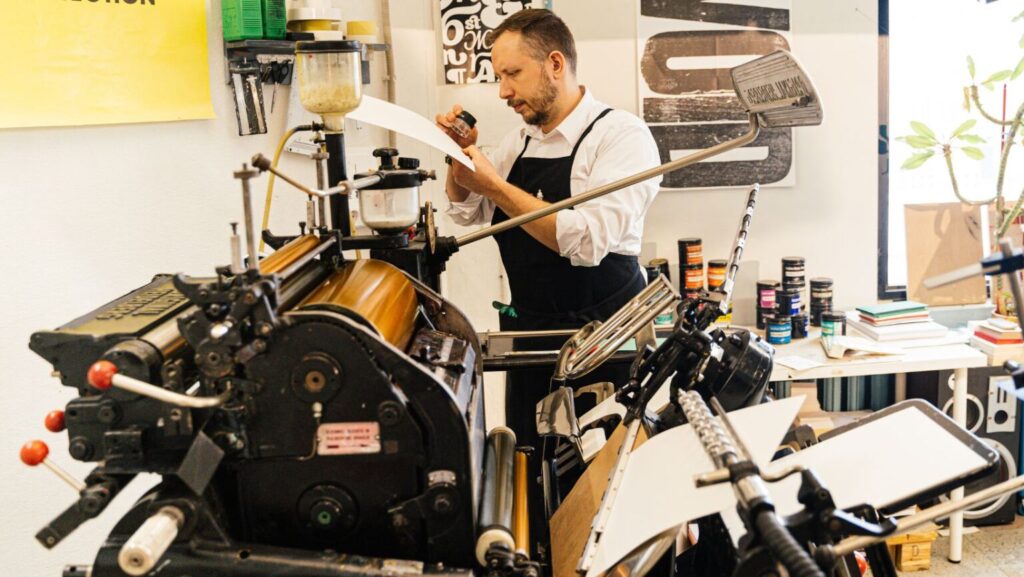We’re not going to sugarcoat it: starting a business, whether a lemonade stand, a custom printing company, or the next Apple, isn’t easy. But it’s also not the insurmountable task that some believe it to be.
To start a custom printing business that caters specifically to SMBs, you need strategy planning from the get-go, investment in high-end equipment (don’t cheap out!), and an understanding of print quality metrics (no such thing as plug and play).
Have those three in order, and you’re well on your way. In this guide, we’ll give you a comprehensive run-through of what you need to tick off the list to get your business off the ground.
The Planning Stage
Planning, planning, planning. We’re repeating it thrice because it’s just that important. Many small businesses will not invest the proper time in this crucial stage, which sets them up for failure.
Conduct Market Research
Luckily, almost every small business requires printing services, whether it’s an event planner, educational institution, non-profit, you name it. But don’t dive in without doing a bit of extra research first.
Find out whether there is enough local demand for custom printing. If not, cast a wider net to nearby towns and cities. And, of course, check out your potential competition. Can you match them in terms of quality and price?
Develop a Business Plan
You need a business plan, no ifs or buts. Invest proper time to create a well-structured document that outlines your goals, target audience, pricing structure, and financial projections.

Do not take shortcuts. Your business plan isn’t just a means to get a loan from a bank or a small to-do you can complete in a day. Success will stand and fall on the viability of your business plan.
Print Quality, Equipment, and Software
To achieve professional results that deliver industry-standard print each and every time, you need the right equipment and software.
Achieving Industry-standard Print Quality
Custom printing for a business is entirely different from anything you can achieve at home. Whether you want to create a brochure, poster, or flyer, having an understanding of print quality is absolutely essential:
RGB vs. CMYK Color Matching: Getting the color right can be a real nightmare, and it’s what separates professional businesses from at-home printing.
RGB (Red, Green, Blue) is used for digital displays and creates colors by combining light. CMYK (Cyan, Magenta, Yellow, and Black) is used for printing and works by layering ink. Since RGB has a wider color gamut than CMYK, colors on a screen may look different from printed materials, making proper color conversion essential for consistency.
Calibrating Printing Equipment: Your equipment requires upkeep; add the time and cost of replacement into your business plan. Regular calibration of printers and monitors ensures consistency and reduces color discrepancies.
Paper matters. Low-quality paper can completely ruin a print project, even if everything else is absolutely on point. When it’s just a matter of cents, it pays to choose high-end paper.

Know the difference between matte, gloss-coated, silk, uncoated, and recycled paper. They each have different qualities and use cases. For example, matte paper, while more expensive, oozes quality and is great for flyers and brochures.
Print Resolution. Understand the concept of print resolution. In broad terms, business cards and brochures typically require at least 300 DPI, while large banners can be printed at lower resolutions (e.g. 150 DPI) without losing quality.
Equipment
To achieve business-level print quality, you need to invest in the right equipment. This may be a sizable investment up-front, but it’s non-negotiable.
Printers. There is no one-size-fits-all, no plug-and-play device like your home printers. Learn about the differences between offset printers, digital devices, and wide-format printers.
Cutting and binding machines. Cutting and binding machines are essential for booklets. To add an extra layer of aesthetic appeal, look into laminating and coating machines.
Design software. Many small businesses do not understand what they need to provide in order to achieve optimal results. Help them get there by investing in software like Adobe Photoshop, Illustrator, and CorelDRAW.
Remember, there are no shortcuts! Starting a custom printing business requires careful planning, a deep knowledge of the local market, investment in quality equipment that can deliver high-end printing, and a commitment to get through the always-tough first year.



